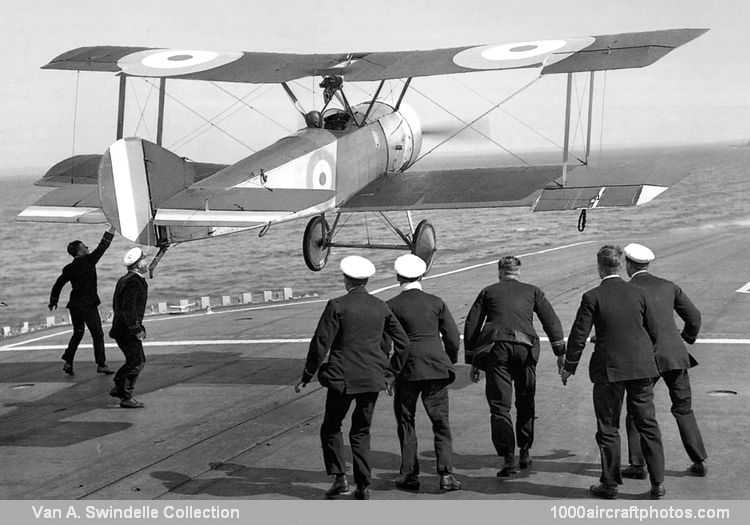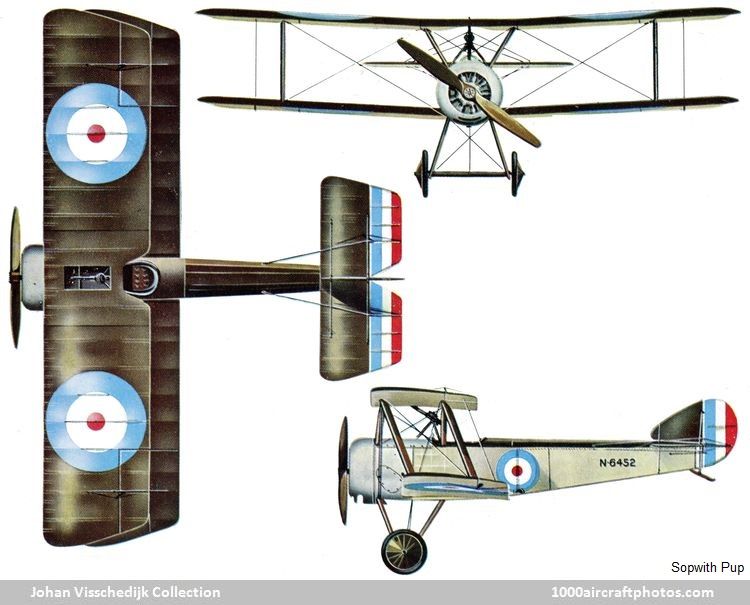11/30/2011. Remarks by Johan Visschedijk: "By far the greater proportion of the Royal Naval Air Service effort in the First World War was by seaplanes or flying boats at coastal air stations or landplanes at shore bases. Aircraft carried in ships played a subordinate role: the aircraft-carrier as it is known today did not make its appearance until the closing phases of the war. The aircraft-carrier was evolved by gradual stages from the early seaplane-carrier which originally had no take off facilities, the aircraft being hoisted over the side to take off from the sea. Later a take off platform was added, sloping down to the bows to provide a clear run.
These platforms were at first used by seaplanes which had wheels (later wheeled trolleys) fitted beneath the floats: only later were landplanes flown from launching platforms. Among the first seaplane-carriers were the converted cross-Channel steamers Empress, Engadine and Riviera, which were commandeered by the Admiralty on August 11, 1914: these three ships launched the seven seaplanes used in the celebrated Cuxhaven raid of Christmas Day, 1914. Another early seaplane-carrier, the former Isle of Man steamer Ben-My-Chree, carried the Short seaplane which on August 12, 1915 made the first successful air-torpedo attack in history while operating in the Dardanelles.
These early seaplane-carriers were, nevertheless, of limited value, as they were severely handicapped by their inability to keep station with the Fleet (they had to stop when hoisting their seaplanes overboard), and the seaplanes themselves could operate in only the calmest of seas because of the fragility of their floats. The launching platform (first fitted on the pre-war HMS Hermes, sunk in October 1914) overcame this difficulty only when the ship was fast enough to provide enough air speed over the deck: some carriers so fitted (e.g. Ark Royal) were too slow and continued to launch their seaplanes the old way.
More successful were the carriers HMS Campania and HMS Vindex, which proved capable of handling the faster single-seaters of the day. On August 6, 1915 a Sopwith Baby on wheeled floats took off from HMS Campania for the first time: this was followed by the first normal landplane take off by a Bristol Scout from HMS Vindex on November 3, 1915. Still the problem remained of getting an aircraft back on to the ship, and it was not until August 2, 1917 that this feat was achieved by Squadron Commander E. H. Dunning, who flew his Sopwith Pup (N6452) round the funnel of HMS Furious and contrived to alight on the 228 ft (69.5 m) long forward flying-deck, as pictured above.
N6452 was one of a batch of thirty Pups built for the RNAS by Beardmore under Admiralty designation Type 9901. Originally fitted with a skid landing gear, it was later converted to a wheeled landing gear. The first aircraft to land on a moving deck was lost five days later, August 7, when on the third landing the aircraft veered of the flight deck into the sea. Squadron Commander Dunning was knocked unconscious and drowned, having the dubious distinction of being the first person to die in an aircraft carrier landing accident."

